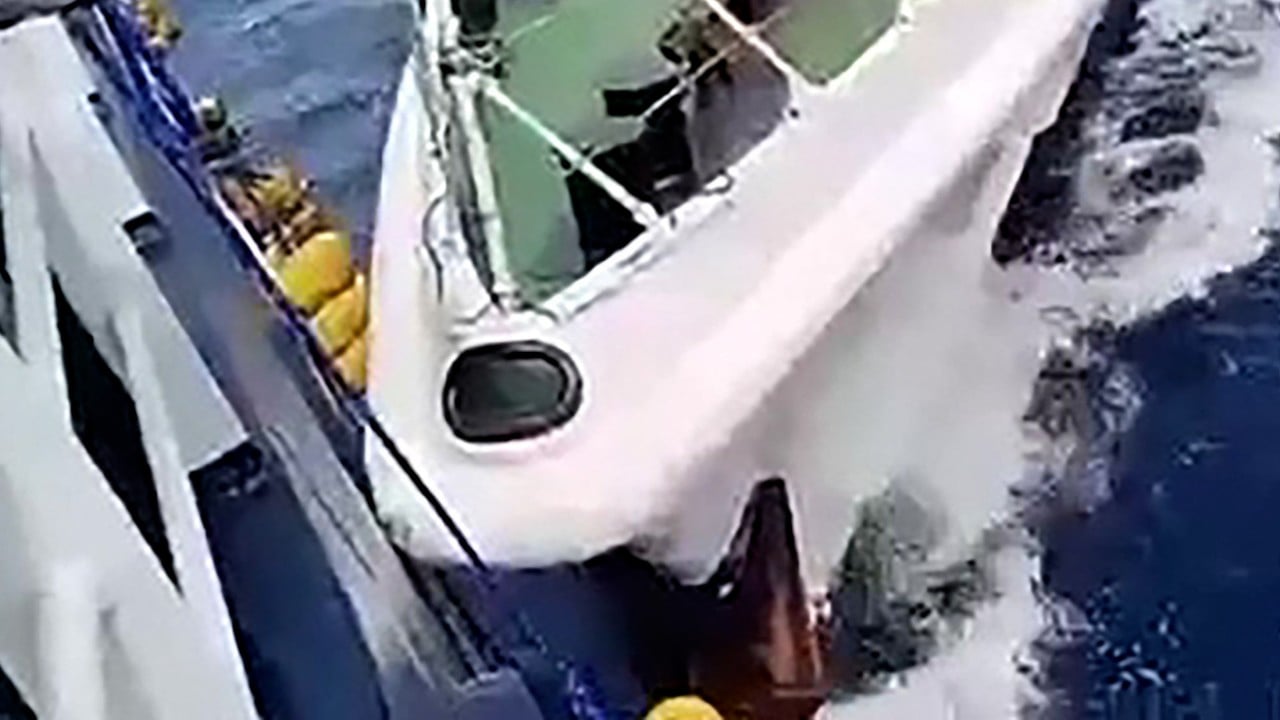Philippines seeks naval self-reliance as South China Sea threats grow: ‘we wasted 6 years’
“Now, we have to catch up. It’s high time to mobilise our industries and people.”
With clashes between Philippine and Chinese vessels becoming more frequent in the South China Sea, rising tensions have sharpened Manila’s focus on defence.
“It is better for the economy to build our own ships,” Philippine Navy spokesman Commodore Roy Vincent Trinidad told local media in May, emphasising that maintaining vessels bought from abroad “is more expensive than their cost”.
Custodio agrees. “We should invest,” he said. “When you are up against a major power like China, it’s not right to approach with half-hearted measures … China believes that our ships are limited.”
In addition to its two frigates, the Philippines has two amphibious transport ships, three corvettes, six offshore patrol vessels and nine fast-attack craft.
“The important thing is we don’t run out of assets,” said Custodio, who is also a fellow at the Consortium of Indo-Pacific Researchers think tank.
The situation in the South China Sea, he said, “is just going to get worse”.

China ‘impossible to match’
The Philippines already has a robust civilian shipbuilding industry, making the development of even a limited naval sector a logical next step, said Greg Poling, director of the Southeast Asia programme at the Centre for Strategic and International Studies think tank in Washington.
“The Philippine Navy has made considerable strides” since the start of the military modernisation push, he said. While still “the smallest and least developed navy” among Southeast Asia’s major nations, “it is exponentially more capable than it was a decade ago”, thanks to the introduction of new corvettes and offshore patrol vessels.
“It is impossible to match China tonne-for-tonne or ship-for-ship,” Poling said, instead advising Manila’s naval forces to continue focusing on “both traditional and asymmetric capabilities, such as fast-attack missile boats”.

Poling argued this showed that the primary aim of Philippine efforts to develop external defence capabilities – countering China’s aggression in the South China Sea – “has shown considerable success”.
Fortifying the Philippines’ external security requires a strong and self-reliant defence posture, according to analyst Chester Cabalza, president of the Manila-based International Development and Security Cooperation think tank.
The Philippine navy is almost on par now with Malaysia’s
The Philippine Navy once excelled in shipbuilding, leveraging the skills of Filipino seafarers and marine engineers, he said.
But a lack of government support and lingering mistrust of the military following the rule of the current president’s authoritarian father, Ferdinand Marcos Snr, caused these capabilities to lapse, according to Cabalza.
That was until “the aggressive rise of China”, he said. In the years since, substantial naval investments have been made, and maritime diplomacy expanded, “to strengthen collective deterrence as a clever countermeasure” to the increased Chinese presence in the South China Sea.

Naval muscle
“The Philippine navy is almost on par now with Malaysia’s,” Cabalza said, though Indonesia, Vietnam, and Singapore still maintain larger naval assets.
By prioritising joint operations and interoperability with like-minded navies, the Philippine Navy is steadily learning from maritime technological advancements across the region and the globe, he said.
“Beijing may have an armada of naval and coastguard vessels,” Cabalza said, but Manila has the backing of influential international navies like those of the US, Australia and Europe. “This certainly multiplies the Philippines’ naval strength as these global navies support Manila’s adherence to maritime rules-based order,” he added.

In July, the Philippine Navy’s Commodore Trinidad suggested that its Chinese counterpart still “needs decades” before its carriers can operate effectively in global or regional conflicts.
US carriers, by contrast, have been battle tested and “can match China’s capabilities,” Cabalza said. This would allow Manila to leverage “a minilateral naval order” to bolster its maritime readiness and strengthen alliances, he said.
The real challenge for the Philippine Navy would be scaling up ship production, said Sherwin Ona, a former navy officer and current political-science professor at De La Salle University in Manila.
“The most cost-efficient approach is to engage the local shipbuilding industry for naval modernisation,” said Ona, who is also a non-resident fellow at independent strategic research organisation Stratbase-ADRI – citing successful projects such as the Multi-Purpose Attack Craft built by Propmech and the BRP Tagbanua landing craft by Philippine Iron Construction and Marine Works.
He also noted the potential for technology transfer when acquiring capital ships, which could facilitate in-country production.
However, he cautioned that the shift towards external defence under the Comprehensive Archipelagic Defence Concept – a new strategy aimed at safeguarding the nation’s entire exclusive economic zone – poses challenges for the Philippines.
“I think the country has realised that modernising its armed forces requires a robust defence industry,” Ona said.
